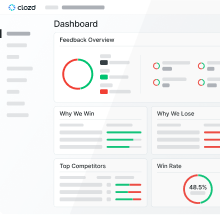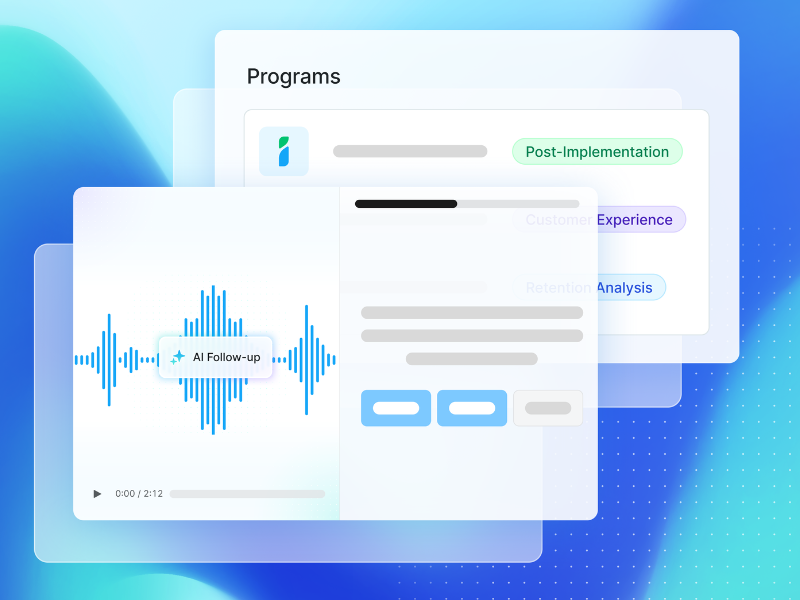
Let’s pretend we’re taking a stroll around your company’s headquarters. If you’re a tech company, let’s skip the spiel about the glass conference rooms and ping pong tables. Our goal is for you to introduce me to each key executive or department head. As you do, let’s play a little game. Let’s try and decide which one of them cares the most about decreasing the average ramp time for new sales hires.
Who Cares About Decreasing Ramp Times
We’ll start with the VP of sales. Shouldn’t they be the most concerned about how fast their new sales hires are contributing? Let’s be honest, they probably are. It’s keeping them up at night. They know that a measurable decrease in ramp times would have major positive implications - it would make it easier to hit quota, it would be a definite bump in morale, and it might get the CFO off their back about the cost of adding so many new hires so soon. The list goes on and on.
But, speaking of the CFO, we’re passing their office now. Do they care? They most certainly do. After all, they are the one crunching the numbers. A measurable decrease in ramp times would mean a nice bump in productivity and the ability to hit next year’s projections with fewer hires than anticipated.
And, speaking of new hires, we’re coming up behind the VP of talent acquisition. Why would he care? For one, those new sales hires he recruited are going to feel validated that they came to the right place; and, any good recruiter knows that new hires are one of the best sources to tap for job candidate referrals. Better yet, the bump in sales engagement means sales attrition will drop. In short, there will be fewer sales positions to fill and a richer candidate pipeline to fill them.
We could keep going around the office. Obviously, the CEO will be a big fan of decreased ramp times. But you probably don’t need anymore convincing. At this point, the real question is: How do you decrease ramp times?
There is no silver bullet. Good hiring can go a long way but territory assignment, lead flow, sales technology and systems, and training all play a role in getting a rep up-to-speed. Tweaks and improvements in each of those areas can make a difference.
At Clozd, we’ve noticed that there is one particular thing that carries some extra weight in determining how fast a sales hire ramps: Understanding the reasons why buyers make their buying decision (the criteria they use) and how your company competes on each of those factors. In short, we call it understanding why you win and lose.
Unfortunately, we’ve also noticed that this knowledge is usually tightly held by more experienced sales reps. We call it tribal knowledge - and there are some natural incentives that tempt these top performers to keep the knowledge secret. After all, it has taken them many wins and losses to finally learn what matters most to buyers and why. They’ve paid a big price to get to where they are, and they quite enjoy being a top performer. Why share their hard earned secrets with a newbie who is just looking for shortcuts? Thus, new hires are bound to have to relearn the same lessons on their own.
Now imagine if you could tap into that tribal knowledge and give each new hire a clear prescription for winning. What if you could package up key learnings from recent wins and painful losses, as though the new hire had already accompanied your tenured reps into the sales trenches?
You can.
Introducing Win-Loss Analysis
In fact, you can tap into a source that is even more reliable than the tribal knowledge of your tenured top-performers. You can tap into the actual buyers - the ones who ultimately decided to buy or not to buy your offering - for a concise and clear understanding of how they made their decision and how well you competed.
Thorough and candid feedback from buyers can give new hires the holistic understanding they need to feel confident and to sound credible. Buyer feedback will shed light on how buyers think, what matters most to them, the strengths and weaknesses of your offering, and how the sales process typically plays out in wins versus losses.
This practice of interviewing decision-makers at won and lost accounts is commonly referred to as win-loss analysis. It’s the next best thing to having sat through every interaction with that client. And it can be done at scale, with insights and patterns being derived across deals and over time.
Focus on the Sweet Spot
Formal win-loss analysis accomplishes much more than just giving new hires access to some transcripts of interviews with buyers. When done enough and done right, win-loss interviews can paint a clear and comprehensive profile of the deals and competitive situations that your company dominates. We call this your sweet spot. The sweet spot is the target where reps should aim. It’s the types of account for which your company’s products or services are tailormade. A clear definition of your sweet spot can be game-changing for an entire sales org, but especially new hires. The sweet spot shows the new hire where to aim, and buyer feedback from win-loss interviews equips them with the message and confidence to succeed. They’ll avoid the bear traps of chasing unwinnable deals and they’ll hit their stride faster by experiencing wins sooner. Without the focus and clarity of a sweet spot, new reps will flounder - wasting days, weeks, or months figuring it out before losing patience and potentially leaving the org.
About Us
We created Clozd to help companies become more competitive by understanding why they win and lose. One of the core tenants of our platform is creating the single source of truth all sales reps so that tribal knowledge becomes digital and scalable. Download our win-loss analysis guide or visit clozd.com to learn more about the programs we offer.











.svg)







.png)



.svg)

.svg)




